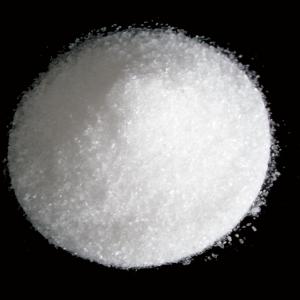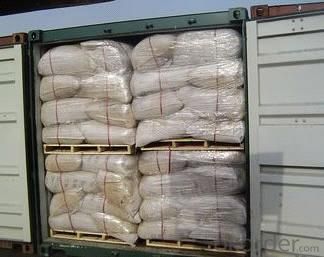Magnesium Sulphate Heptahydrate Chemical Powder
- Loading Port:
- China main port
- Payment Terms:
- TT OR LC
- Min Order Qty:
- 1000 kg
- Supply Capability:
- 500000 kg/month
OKorder Service Pledge
OKorder Financial Service
You Might Also Like
Magnesium Sulphate Heptahydrate
Product Name: Magnesium Sulphate Heptahydrate
Molecular formula: MgSO4.7H2O
Molecular weight: 246.47
CAS NO.: 10034-99-8
HS CODE: 28332100

Product features:
magnesium sulphate,also named magnesium sulfate
heptahydrate, epsom salts; bitter salts, when it is used in industry,
it is MgSO4.7H2O, CAS:10034-99-8.
usage:
Magnesium sulphate is mainly used in industry, agriculture,food,feedstuff,medical and fertilizer
Categories: MgSO4.7H2O(big, middle,small particles,main content is above 99.5%)
Magnesium sulfate heptahydrate (Agriculture grade):
| Appearance | White small granular |
| Main content | 99% min |
| MgSO4 | 48.59% min |
| MgO | 15% min |
| Mg | 9.70% min |
| Ferron(Fe) | 0.01% max |
| Chloride(Cl ) | 0.5%max |
| Heavy metal (Pb) | 0.001 %max |
| Arsenic(As)(As) | 0.0002% max |
| Insoluble | 0.001%max |
| Size (mm) | 0.1-1、 0.2-3、 1-4 |
Magnesium sulfate heptahydrate (Technical Grade):
| Appearance | White small granular |
| Main content | 99.5% min |
| MgSO4 | 48.59% min |
| MgO | 16.24% min |
| Mg | 9.80% min |
| Ferron(Fe) | 0.0015% max |
| Chloride(Cl ) | 0.015%max |
| Heavy metal (Pb) | 0.0008% max |
| Arsenic(As)(As) | 0.0002% max |
| Insoluble | 0.01%max |
| Size (mm) | 0.1-1、0.2-3、1-4 |
(1) In agriculture and gardening, magnesium sulphate is used to correct magnesium deficiency in soil.
It is most commonly applied to potted plants, or to magnesium-hungry crops, such as potatoes, roses, tomatoes, and peppers.
The advantage of magnesium sulphate over
other magnesium soil amendments is its high solubility.
(2) It is used as magnesium fertilizer in agriculture and also used as feed additives.
(3) used as the weight additive for cotton, silk, filling for wood products, and also for the manufacture of
porcelain paint and material of fireproof .
(4) In microbial industry, it is used as the components of growth media, additives of brewing to be the nutrition
sources of fermentation. It is used to enhance the heat endurability as the filling agent in tanning industry.
(5) In light industry, it is used in production of the fresh yeast MSG and the stabilizer of the calcium hydrogen
phosphate for the toothpaste production and the congealing agents for cement, as well as used in pulp and textile
industry, and other industries.

FAQ
1.Q: What is MOQ?
A: Our MOQ is 1 TON.
2.Q: Could you offer free sample?
A: We can provide free samples to you for quality testing.
3.Q: What about your packing?
A: For liquid: Flexitank, or IBC tank 1000L
For powder:Woven fabric bag with plastic film liner( 25kg or 1000kg)
Clients’ packing is workable.
4.Q: How about your productive capacity?
A: 150000 tons/Year.
5.Q: What is your delivery time?
A: Within 7 days after received deposit or L/C at sight.
- Q: Do inorganic mercury salts bioaccumulate?
- Yes they do bioaccumulate. Mercury builds up for years and years, and eventually sits in a residue of pure mercury. - JJ
- Q: Is it possible to adjust the internal temperature of the carbohydrate in the vacuole
- the internal environment refers to the human cell life of the liquid environment, that is, extracellular fluid.
- Q: How to add inorganic salts
- Helicobacter pylori can cause a variety of stomach problems, including gastritis, gastric ulcer, duodenal ulcer, non-ulcerative indigestion, gastric cancer. Therefore, the eradication of Helicobacter pylori has become an important measure for the treatment of modern gastrointestinal diseases. To identify patients with Helicobacter pylori infection, the clinical need for a high sensitivity, specificity, fast, simple, safe, inexpensive Hp diagnostic method, that is, carbon 14 breath test. The examination and painless, noninvasive, fast and simple, no cross the advantages of infection, experts at home and abroad have been recommended for the diagnosis of Hp gold standard, has been widely used in clinical practice.
- Q: What are the important physiological effects of inorganic salts in cells
- Composition of cells in some important compounds,
- Q: What are the effects of inorganic salts on plant growth?
- N: promote cell division and growth, so that leaves grow lush. Lack of performance: plant thin and thin, leaves yellow, severe leaves were light brown.
- Q: What is the inorganic salt, is not the organic salt and is not the inorganic salt
- There is no concept of organic salt inorganic salt inorganic salts in the class of chanting
- Q: how come a penny can hold more drops of the salt water solution than just plain tap water from your faucet?
- Surface Tension Of Salt Water
- Q: Why does inorganic salts affect chemical degradation of organic wastewater
- Industrial organic waste water is highly toxic and stable pollutants, for such waste water is difficult to use conventional physical, chemical and biological methods. This paper summarizes the main processing technologies of biodegradable organic wastewater at home and abroad, including biological treatment, chemical treatment and physical treatment and various joint treatment processes. The methods or processes of various methods or processes are described.
- Q: What inorganic salts are needed for seeds?
- Phosphate, nitrogen, magnesium, calcium, iron, copper, and boric acid
- Q: Why vegetables and fruits contain rich inorganic salts
- Because they are plants! From the biological point of view, they are the nature of the organic matter into inorganic salt carrier
Send your message to us
Magnesium Sulphate Heptahydrate Chemical Powder
- Loading Port:
- China main port
- Payment Terms:
- TT OR LC
- Min Order Qty:
- 1000 kg
- Supply Capability:
- 500000 kg/month
OKorder Service Pledge
OKorder Financial Service
Similar products
Hot products
Hot Searches
Related keywords



























